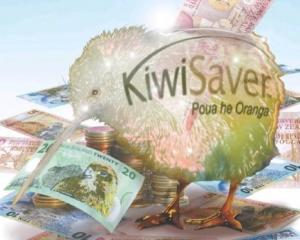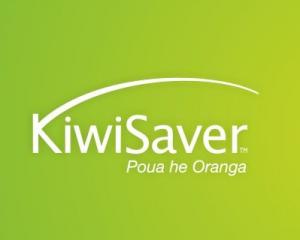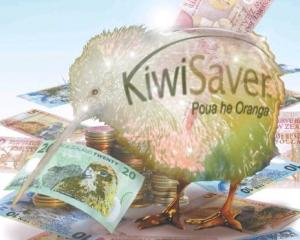
After three years of contributing to KiwiSaver, some people will be entitled to a deposit subsidy.
Also, after three years' membership, members of a KiwiSaver or complying scheme can withdraw their savings to help buy their new home.
Forsyth Barr KiwiSaver specialist Damian Foster yesterday said he expected much interest in the first-home withdrawal option.
"This is a good way for young people to see a short-term goal of home ownership rather than looking all the way through to retirement at 65."
However, the scheme involved a few restrictions and rules.
The deposit subsidy paid $1000 a year for each year of regular contributions to KiwiSaver, meaning the first applications could only be for $3000, he said.
Buyers had to live in the home and could not buy a rental property. The scheme was for first-home buyers, or a similar situation. That could mean a young couple who had split up and found themselves back at "square one".
There would be income testing, which meant a couple earning a combined $100,000 or more would not qualify. But a couple could join and get two grants, an added benefit for home buyers, Mr Foster said.
There were also restrictions around the price of the house. For Dunedin, the upper limit of the purchase price was $300,000, also the same for most of New Zealand.
"That gives us an advantage down here, because of our property prices compared with those a bit further north."
In Queenstown and Central Auckland, the limit was $400,000 to reflect the higher costs of homes in those areas, he said.
"They believe that if you are spending more than $400,000 on a first home then you don't need the first-home withdrawal scheme."
Both schemes were expected to provide some spark to a flat housing market, Mr Foster said.
Younger buyers often struggled to get a 20% deposit, as required by most banks, which had become more reluctant to lend during the recession.
"This won't fix things but it is a big first step."
The Government contributions to an individual's KiwiSaver account could not be withdrawn until the saver was 65. But that also meant the account holder had a base from which to start saving.
Figures supplied by Mr Foster showed that after five years, someone earning $52,000 a year and contributing 2% of the salary to KiwiSaver would have $18,180 to put towards a home.
The saver's contribution would be $5200, the employer contributions would be $5200, and the Government contributions would be the same, although that stayed until the saver was aged 65. The Government kick-start $1000 also stayed until 65. Investment income, based on a 5% compounded return, was $2780.
When buying a first home, a KiwiSaver member could withdraw their own contributions of $5200, the employer contributions of $5200, any investment earned such as the 5% return of $2780, plus the free first-home subsidy grant of $5000.
The total that could be withdrawn after five years was $18,180, which left the $6200 of Government contributions in the account.






